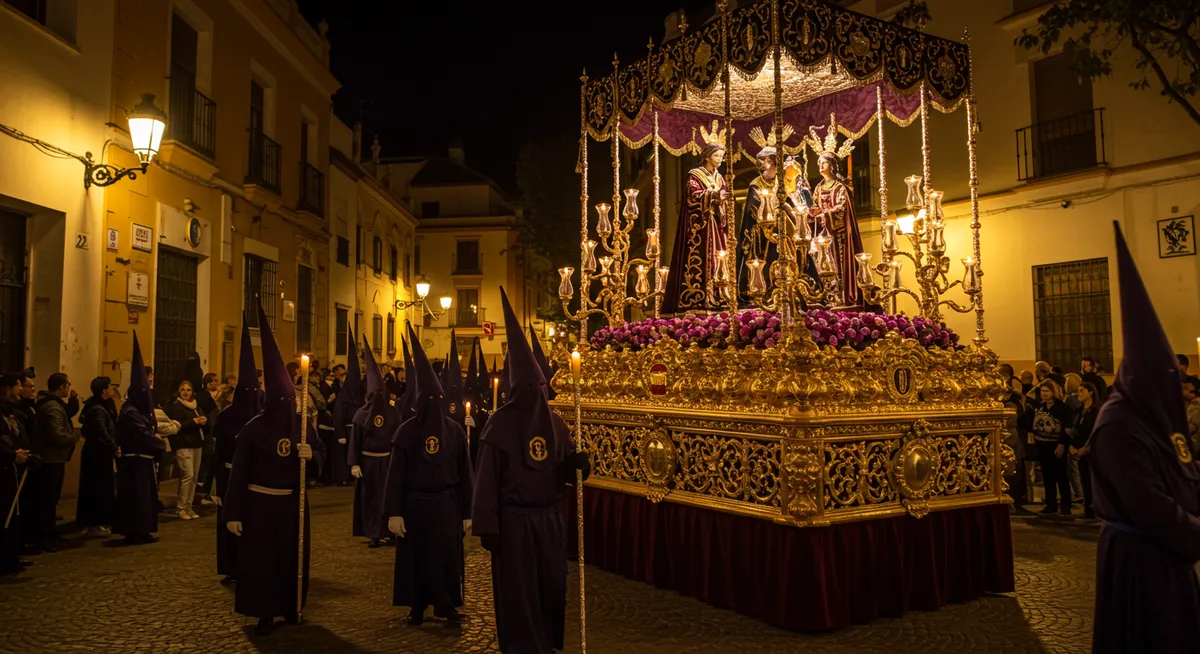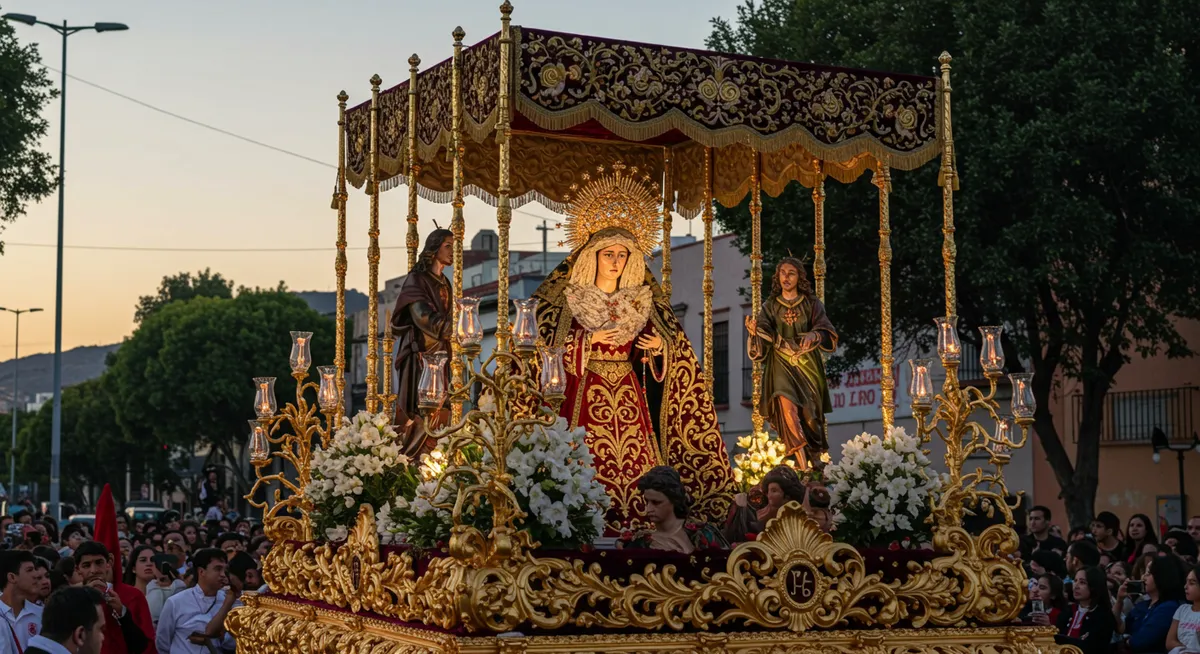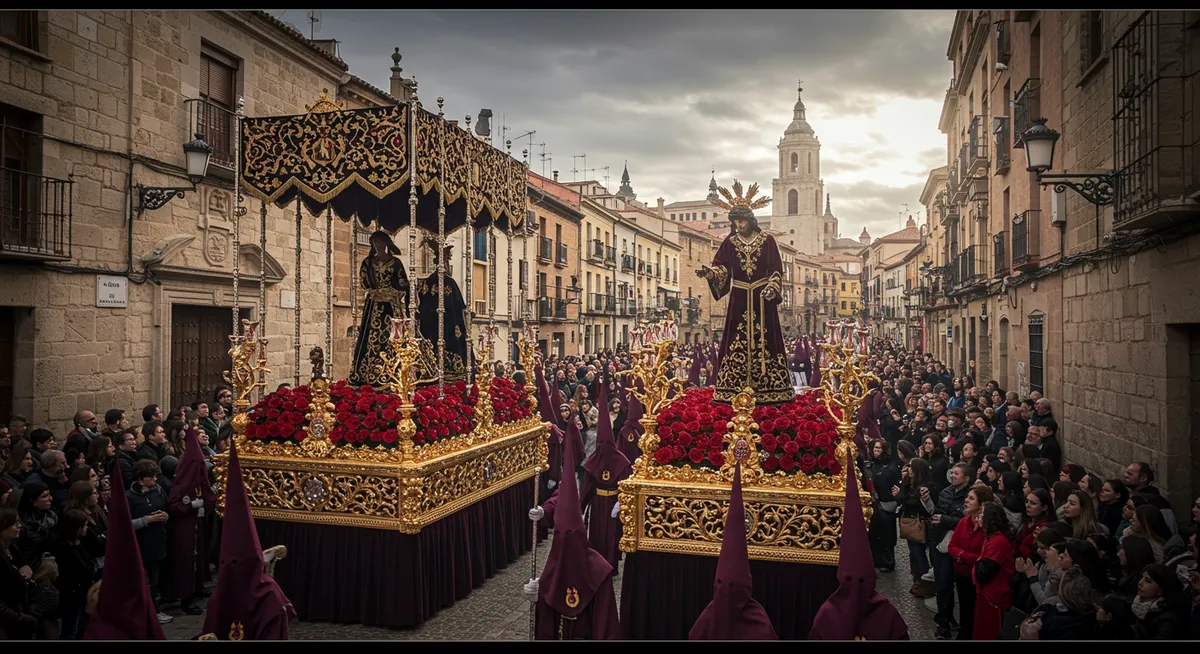Semana Santa Guide | Spain's Dramatic Holy Week Celebrations

Semana Santa: Spain's Dramatic Holy Week Celebration
Few religious celebrations in the world can match the visual intensity, emotional power, and cultural significance of Spain's Semana Santa (Holy Week). Each spring, cities and towns across Spain are transformed as centuries-old brotherhoods take to the streets in solemn processions featuring elaborate floats with life-sized religious sculptures, haunting music, distinctive costumes, and crowds of reverent spectators. Far more than just a religious observance, Semana Santa represents a profound cultural expression that combines Catholic devotion, artistic tradition, historical identity, and community participation. This guide explores the essential aspects of Spain's Holy Week celebrations, providing travelers with cultural context and practical information for experiencing this extraordinary Spanish tradition.

The Cultural and Religious Significance of Semana Santa
Holy Week traditions in Spain reflect deep historical and cultural foundations:
- Religious Devotion: The processions dramatize the Passion, death, and resurrection of Christ through visual storytelling
- Historical Continuity: Many brotherhoods (cofradías and hermandades) have organized processions continuously since the 16th century
- Artistic Heritage: The elaborate floats feature some of Spain's most extraordinary religious sculptures
- Communal Identity: Brotherhood membership often spans generations, creating deep community bonds
Key Elements of Semana Santa
Understanding the distinctive components of Holy Week processions enhances appreciation:
The Processions
The heart of Semana Santa consists of elaborate processions with several key elements:
- Pasos: Wooden floats bearing life-sized sculptural scenes depicting Christ's Passion or the Virgin Mary's sorrow
- Nazarenos: Brotherhood members wearing distinctive robes and conical hoods (capirotes) who march in the procession
- Costaleros: The hidden bearers who carry the massive wooden floats on their necks and shoulders
- Banda: Drum and brass bands playing solemn marches or, in some regions, accompanied by saetas (flamenco laments)

The Brotherhoods
Religious confraternities form the organizational backbone of Semana Santa:
- Historical Foundations: Many date back to the Medieval and Renaissance periods
- Distinctive Identity: Each brotherhood has its own colors, insignia, and traditions
- Year-Round Responsibilities: Beyond Holy Week, they engage in charitable work and religious activities
- Membership Significance: For many Spaniards, brotherhood affiliation represents an important family tradition
Regional Variations
Semana Santa celebrations vary significantly across Spain's diverse regions:
- Andalusia: Southern Spain's celebrations are the most elaborate, with Seville at the epicenter
- Castile and León: More austere traditions with pronounced silence and simplicity, particularly in Valladolid and Zamora
- Murcia and Cartagena: Features unique "colorful" processions with Roman-inspired elements
- Catalonia: Distinctive traditions including the "Dance of Death" in Verges
Experiencing Semana Santa by City
Each Spanish city offers a unique Holy Week experience:
Seville: The Grand Spectacle
Andalusia's capital hosts Spain's most renowned Holy Week celebrations:
- La Madrugá: The night between Holy Thursday and Good Friday features the most important processions
- Famous Brotherhoods: El Silencio, La Macarena, El Gran Poder, and La Esperanza de Triana draw the largest crowds
- Sensory Experience: Orange blossom scent mixes with incense as processions move through narrow streets
- Cultural Impact: The entire city transforms, with over 60 brotherhoods processing over the week
Málaga: Maritime Tradition
This coastal city's celebrations feature distinctive characteristics:
- Throne Bearers: Unlike elsewhere, Málaga's costaleros carry the thrones on their shoulders, making the floats appear to sway
- Military Involvement: The Spanish Legion's dramatic participation during their Christ of the Good Death procession
- Release of Prisoners: A tradition where a prisoner is pardoned during Holy Week
- Ornate Thrones: Particularly elaborate decoration of the pasos
Valladolid: Artistic Focus
Central Spain's celebration emphasizes sculptural artistry:
- National Museum of Sculpture: Home to many of the priceless sculptures that process during the week
- Solemn Atmosphere: Known for its silence and austerity compared to Andalusian celebrations
- Procession of Passion: The Good Friday procession unites sculptures from various brotherhoods into a single narrative
- Artistic Heritage: Features works by renowned sculptors including Juan de Juni and Gregorio Fernández

Planning Your Semana Santa Experience
Creating a meaningful Holy Week experience requires thoughtful planning:
Timing and Schedule
Understanding the Holy Week calendar helps maximize your experience:
- Calendar Determination: Dates vary each year based on the first full moon after the spring equinox
- Key Days: Palm Sunday begins the week, with the most important processions on Holy Thursday and Good Friday
- Daily Schedules: Each city publishes detailed procession routes and times
- Weather Considerations: Rain can cause cancellations, as many priceless sculptures cannot be exposed to water
Practical Considerations
Preparing properly for Semana Santa enhances both enjoyment and comfort:
- Advance Booking: Secure accommodations 6-12 months ahead, especially in Seville
- Viewing Strategies: Choose between reserved seats (expensive but comfortable) or finding street spots hours in advance
- Physical Preparation: Many processions last 8-12 hours, requiring stamina and comfortable footwear
- Crowd Navigation: Major processions draw enormous crowds, requiring patience and planning
- Schedule Adaptations: Many restaurants and businesses operate on special Holy Week hours
Cultural Context for Visitors
Understanding the deeper cultural dimensions enhances appreciation and promotes respectful participation:
Historical Background
Semana Santa traditions emerged from specific historical circumstances:
- Counter-Reformation Origins: Many processions began during the 16th century as the Catholic Church promoted visual religious expression
- Penitential Purpose: Originally focused on public penance and spiritual mortification
- Artistic Evolution: Baroque sculptural traditions created the masterpieces that continue to process today
- Modern Continuity: Despite Spain's increasing secularization, Semana Santa remains culturally important even to non-religious Spaniards
Symbolism and Meaning
The visual elements of Semana Santa carry rich symbolic significance:
- Color Symbolism: Purple represents penitence, black symbolizes mourning, white signifies purity
- Capirote Origins: The distinctive conical hood originally signified penitence and shame, allowing sinners to hide their identity
- Candle Lighting: Represents faith illuminating darkness
- Incense Usage: Symbolizes prayers rising to heaven while creating a distinctive sensory atmosphere
Experience Spain's Most Profound Cultural Tradition
Spain's Semana Santa offers travelers a window into core aspects of Spanish cultural identity—the powerful influence of Catholic traditions, the extraordinary artistic heritage that emerged from religious devotion, the importance of community bonds formed through shared ritual, and the distinctive regional variations that reflect Spain's cultural diversity.
By approaching Holy Week with an understanding of its religious significance and cultural context, visitors can experience one of Europe's most visually striking, emotionally moving, and culturally authentic celebrations. Whether you're witnessing Seville's grand spectacle, Valladolid's artistic solemnity, or the unique traditions of smaller towns, Semana Santa provides an unforgettable immersion into Spanish culture at its most profound and expressive.
Ready to experience Semana Santa in Spain?
Start planning your Holy Week journey with our practical travel tips and insider guides to the most authentic celebration locations.
Check back soon for our upcoming detailed guides to specific city celebrations, brotherhood histories, and traditional Semana Santa foods.
Explore More European Festivals
Semana Santa is just one of many extraordinary cultural celebrations across Europe. Discover more incredible festivals in the region:
Continue your exploration of European festival culture by returning to our European Festivals Guide, where you can discover other significant celebrations from Germany's Oktoberfest to Sweden's Midsummer festivities.
← Back to European Festivals